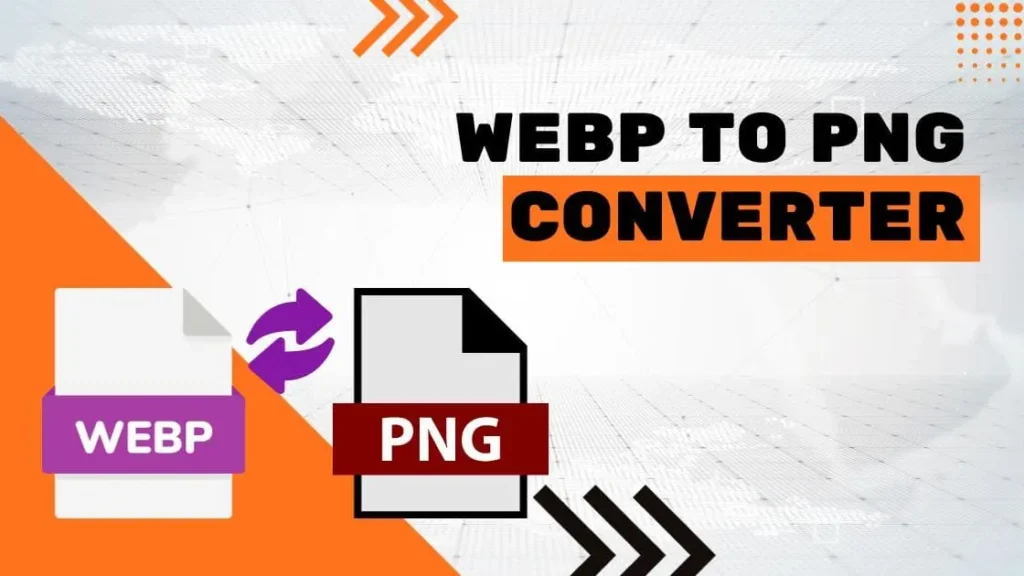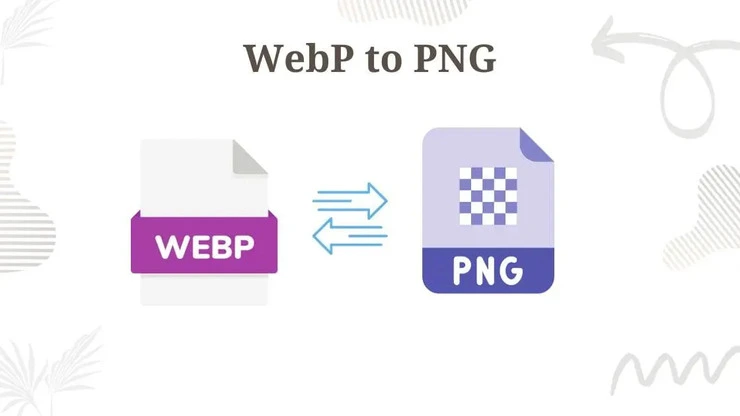Web designers and developers perpetually seek avant-garde methods to amplify website performance, with the quintessential facet being the selection of image formats. In this discourse, we embark on an odyssey into the realm of WebP to PNG conversion, unraveling the intricacies, benefits, and conundrums entwined with these ubiquitous image formats.
Overview of WebP format
Google created the modern image format known as WebP, which is intended to offer both high compression efficiency and high image quality. It is especially good for use on the Web, where faster loading times necessitate reducing file sizes without sacrificing visual fidelity.
The WebP format has the following key features:
Lossy and Lossless Tension: Both lossy and lossless pressure are upheld by WebP. Lossless pressure safeguards the first picture quality without decreasing document size, though lossy pressure diminishes record size while forfeiting some picture quality.
Less enormous documents: WebP’s prevalent productivity as far as pressure is one of the primary benefits it has over other picture designs like PNG. WebP pictures are by and large more modest in size, contrasted with identical quality JPEG or PNG pictures, making pursuing them an extraordinary decision for web applications where data transfer capacity is a worry.
Transparency: WebP, like PNG, supports transparency, enabling images to have transparent or partially transparent regions. This is especially valuable for making pictures with sporadic shapes or for overlaying pictures on various foundations.
Animation: WebP additionally upholds illuminated pictures, like GIFs. This goes with it a flexible decision for making lightweight enlivened content on the web.
Support for browsers: While WebP is upheld by most present-day Internet browsers, more seasoned programs may not completely support the configuration. In such cases, a backup system, such as utilizing JPEG or PNG renditions of the pictures, might be important.
Browser Support for WebP:
major web browsers have varying degrees of support for WebP. Notable support includes:
Google Chrome: Full support for WebP.
Mozilla Firefox: Supports WebP, but might have limitations based on the version.
Microsoft Edge: Supports WebP.
Safari: Limited support in some versions. As of my last update, Safari did not have native support for WebP, but this could change with future updates.
Need for WebP to PNG conversion
A. Similarity issues:
Support for browsers: Some more seasoned internet browsers might not have local help for the WebP picture design. Compatibility issues may arise if your target audience includes browser users with out-of-date versions. When you change WebP to PNG, you can be sure that your images will look the same in all browsers.
Application Similarity: Converting your images to PNG can help maintain compatibility if they need to be used in a number of tools, software, or systems that do not yet support WebP. Some applications or platforms may not fully support WebP.
Content Conveyance Organizations (CDNs): Content conveyance organizations, particularly those serving assorted crowds worldwide, may have reserving components that are not enhanced for WebP. Switching over completely to PNG can guarantee that the pictures are conveyed accurately through the CDN without similarity issues.
B. Issues with accessibility:
Screen Perusers and Assistive Innovations: A few screen perusers and assistive advances may not be enhanced to decipher or portray pictures in the WebP design. The content will continue to be accessible to users with disabilities if you convert it to PNG, a format that is widely supported.
Visibility and Contrast in Color: When it comes to alpha channel transparency, WebP images may have varying color contrast or visibility. Switching over completely to PNG considers better command over these visual angles, guaranteeing that pictures fulfill availability guidelines.
C. Client necessities and inclinations:
Explicit Venture Particulars: PNG images may be required by clients for specific project requirements. These details could be driven by variables like similarity with existing frameworks, the requirement for lossless pressure, or adherence to industry principles.
Client Inclinations: Clients may choose PNG over WebP for a variety of reasons, such as familiarity, ease of use in workflows, or the perception that PNG is a format that is more widely accepted and supported.
Work process Joining: On the off chance that the client’s work process is better lined up with PNG, switching WebP over completely to PNG might be a functional choice. It guarantees consistent joining into the client’s cycles, keeping away from potential interruptions related with utilizing a less natural or viable configuration.
Switching WebP over completely to PNG might be important in light of multiple factors, contingent upon the particular prerequisites of a task or application. Here are a few normal situations where you could have to perform WebP to PNG changes:
Support for Older Versions of Browsers:
The WebP format may not be fully supported by some older Web browsers. If you have any desire to guarantee expansive similarity with a large number of programs, including those that don’t uphold WebP, you could have to give a PNG rendition of the pictures as a backup plan.
Software or older hardware:
In specific cases, heritage frameworks or programming applications might not have underlying help for the WebP design. Changing over WebP pictures to PNG guarantees similarity with more seasoned frameworks that probably won’t be prepared to deal with the fresher arrangement.
Visual computerization programming:
Converting WebP to PNG makes it possible to seamlessly integrate and edit within graphic design tools that primarily support PNG or other standard formats without sacrificing quality.
Specific Needs for the Project:
A few ventures or applications might have explicit necessities or principles that command the utilization of PNG pictures. In such cases, switching WebP over completely to PNG becomes important to line up with project specifics.
Straightforward Pictures:
While both WebP and PNG support straightforwardness, there may be occurrences where the particular alpha channel execution or straightforwardness conduct of PNG is liked or expected over that of WebP.
Work Process or Pipeline Requirements:
On the off chance that your picture handling or content conveyance pipeline is advanced for PNG, switching WebP over completely to PNG might be important for the work process to keep up with consistency and smooth out the general interaction.
Client Inclinations:
At times, clients could like or anticipate pictures in a specific configuration, and in the event that PNG is the favored decision, you would switch WebP over completely to PNG to live up to those assumptions.
Importance of Using the right Image Format

Picking the right picture design is essential in light of multiple factors, as it straightforwardly influences factors, for example, document size, picture quality, and similarity. The following are a few significant viewpoints featuring the meaning of choosing the fitting picture design:
Record Size and Stacking Rate:
The efficiency of compression varies across image formats. File sizes can be significantly reduced by selecting a compression format like WebP or JPEG. This is pivotal for web applications, where more modest record sizes add to quicker stacking times, better client experience, and decreased data transmission utilization.
Picture Quality:
The quality of the images that are displayed is influenced by the format that is chosen. A few configurations, such as PNG and WebP, support lossless pressure, saving the first picture quality. Other formats, such as JPEG, make use of lossy compression, sacrificing some quality in order to reduce file sizes. Based on the project’s specific requirements, a balance must be struck.
Straightforwardness and Alpha Channels:
In the event that straightforwardness is a key necessity, designs like PNG and WebP support alpha channels for smooth and halfway straightforwardness. JPEG, then again, doesn’t uphold straightforwardness. The correct format ensures that transparent elements in images are displayed correctly.
Variety, Profundity, and Range:
Color palettes and depths of color are supported by various image formats. For instance, GIF is restricted to 256 varieties, while JPEG and PNG support a more extensive territory. The decision of configuration influences how well a picture can address the tones required for a specific application, like photography or visual depiction.
Movement Backing:
The format you choose is important if your project includes animated images. Animation is supported by WebP, GIF, and some video formats like GIFV or MP4. The reasonableness of an organization relies upon factors like record size, playback quality, and program support.
Program and Stage Similarity:
Some picture configurations may not be generally upheld across all programs and stages. The target audience and the browsers or devices they are likely to use must be taken into consideration. Giving backup plans or elective configurations might be important for more extensive similarity.
Needs for Editing and Workflow:
The picture organization can affect the simplicity of altering and mixing into different work processes. For instance, some graphic design software may be more compatible with particular file formats. It is essential to select a format that is compatible with your workflow’s tools and procedures.
Requirements Specific to the Project:
Various ventures might have special prerequisites. For instance, clinical imaging could require lossless pressure for precise portrayal, while a site might focus on low record sizes. For selecting the appropriate format, it is essential to comprehend the project’s specific requirements.
The significance of picking the right picture design lies in upgrading record size, keeping up with picture quality, supporting vital highlights (like straightforwardness or activity), guaranteeing similarity across stages, and lining up with project-explicit prerequisites. The effective delivery of visual content and a better overall user experience are both enhanced by making an informed decision.
PNG Unveiled: A Comprehensive Sojourn
Portable Network Graphics( PNG), an enduring giant in the digital sphere, boasts an outstanding heritage defined by its lossless contraction prowess and unwavering support for translucency. This section orchestrates a symphony, furnishing an each- encompassing outlook of PNG, emphasizing its use cases, and reposing in its wide adulation.
The Intricate Dance: WebP vs. PNG
A pivotal facet of the labyrinthine world of image formats lies in comprehending the demarcations between WebP and PNG. From the ballet of compression efficiency to the lyricality of transparency support, we embark on an expedition to juxtapose these formats, guiding you in making sagacious decisions.
Tools and Methods for Conversion
Online converters:
CloudConvert: A Web-based platform called CloudConvert supports a wide range of document conversions, including WebP to PNG. Users can upload and convert their WebP files to PNG using the simple interface.
Zamzar: Zamzar is another web-based record change administration that upholds the transformation of WebP to PNG. It lets users upload files, select an output format, and either download or email the converted files.
Convertio: Convertio is a web-based converter that upholds different picture designs, including WebP and PNG. Clients can transfer records from their PC, Google Drive, or Dropbox, or give a URL to change.
B. Utilizing visual depiction programming:
Adobe Photoshop: Visual communication programming like Adobe Photoshop gives a direct technique for changing over pictures between various configurations. Clients can open a WebP document in Photoshop and afterward save or commodity it as a PNG.
GIMP (GNU Picture Control Program): GIMP is a free and open-source raster illustration supervisor that supports picture change. Clients can open a WebP document in GIMP and publish it in PNG format.
CorelDRAW: CorelDRAW is one more visual communication program that permits clients to open WebP records and commodity them as PNG. It gives scope to customization during the change interaction.
C. Order line change choices:
ImageMagick:
ImageMagick is a powerful image conversion command-line tool. The accompanying order can be utilized for a WebP to PNG change:
FFmpeg: Lua Copy Code Magick input.webp output.png
FFmpeg, a sight and sound system, can be utilized for picture transformation too. The accompanying order changes from a WebP document to a PNG:
css Copy code ffmpeg -i input.webp output.png The WebP tools cwebp and dwebp:
WebP has its own set of tools for the command line. To switch WebP over completely to PNG, you can utilize the accompanying order:
lua Copy code dwebp input.webp -o output.png These methods and tools offer flexibility based on the preferences of the user. For example, you can use online converters for quick and easy tasks, graphic design software for more control and customization, or command-line tools for automation and scripting in a development environment. The choice is determined by the user’s technical proficiency and specific requirements.
The Alchemy of Benefits: Converting WebP to PNG
Why traverse the alchemical path of converting WebP to PNG? This section casts a luminous glow on the benefits, including the harmonious blend of improved compatibility, heightened accessibility, and enhanced usability across diverse digital realms.
Conundrums Amidst the Metamorphosis
No metamorphosis is sans conundrums. Here, we traverse the chasms, probing potential impediments in the WebP to PNG conversion saga and furnishing strategies to assuage the specter of data loss and other quandaries.
SEO Alchemy: Optimizing WebP to PNG Conversion
For the maestros of web development and SEO, the symphony of image optimization assumes a pivotal role. Delve into the essence of optimizing WebP to PNG conversion for a symphony that elevates SEO performance, adorned with practical tips to strike the perfect equilibrium.
Tales of Transmutation: Case Studies Unveiled
Veritable tales from the trenches resonate loud. This segment unveils chronicles of triumph, where the conversion from WebP to PNG metamorphosed website performance, a tangible testimony to its efficacy.
Guiding Lights: Best Practices with WebP and PNG
Navigating the kaleidoscopic array of image formats demands discernment. Unearth the guiding lights, encapsulating best practices for navigating the juncture between WebP and PNG, orchestrating a ballet that balances quality and file size with finesse.
Futuristic Visions: Trends in Image Formats
As the tapestry of technology unfurls, so do the tapestries of image formats. This section embarks on a cosmic odyssey, exploring nascent trends in image compression technologies and prophesying potential evolutions in the realms of WebP and PNG formats.
Vox Populi: User Feedback and Reviews
What echoes resonate in the user echelons concerning WebP to PNG conversion? Immerse yourself in the cacophony, gathering feedback, and addressing common concerns and misconceptions surrounding this chimerical transformation.

Denouement: A Transcendent Finale
In the denouement, the voyage from WebP to PNG stands as a transcendental odyssey. Revisit the symphony’s key motifs, weaving a tapestry that beckons readers to embark on their own experiments with diverse image formats, optimizing their digital footprint.
FAQs: Decrypting the Enigma
Is the Alchemy Reversible?
Plunge into the enigma of reversibility in the WebP to PNG alchemy, unraveling potential data loss specters.
Harmony in Duality: Coexistence of WebP and PNG Formats
Learn the artistry of strategically harmonizing the duet of WebP and PNG for an opus of optimal website performance.
Confronting Shadows: Limitations of WebP or PNG Formats
Confront the shadows of limitations, probing considerations when traversing the realms of these enigmatic image formats.
Rhythms of Loading Speed: Impact of Image Optimization
Decipher the rhythmic dance between image optimization and the tempo of website loading speed.
Tools of the Alchemist: Recommended Instruments for Conversion
Unveil the arsenal of tools, discovering revered implements for orchestrating seamless conversion between WebP and PNG formats.
-
-
-
- Tools of the Alchemist: Recommended Instruments for Conversion
- Unveil the arsenal of tools, discovering revered implements for orchestrating seamless conversion between WebP and PNG formats.
Embark on the odyssey to revolutionize your web design – explore the kaleidoscopic possibilities of WebP to PNG conversion today!



